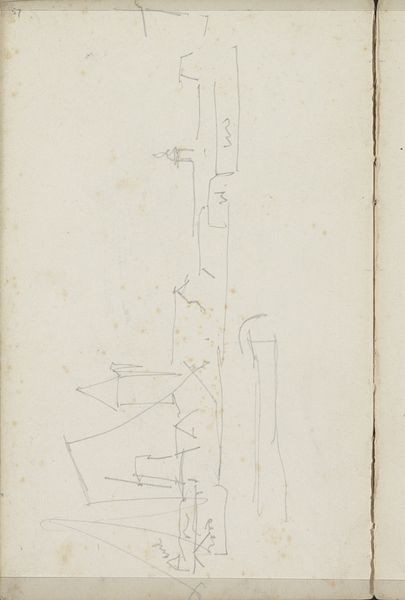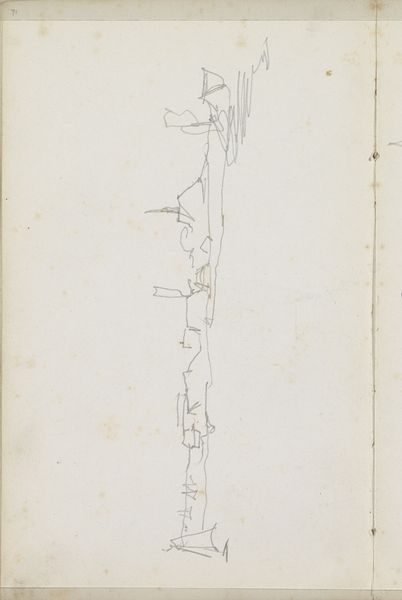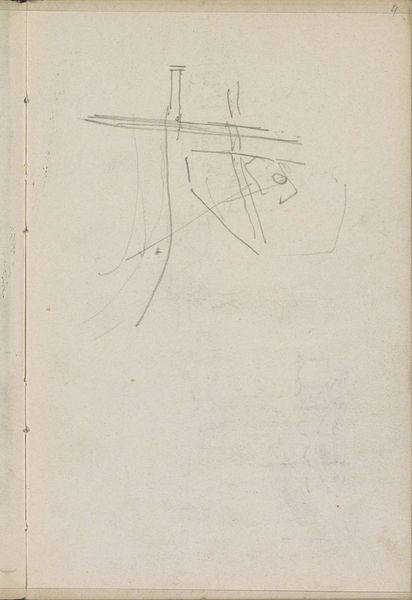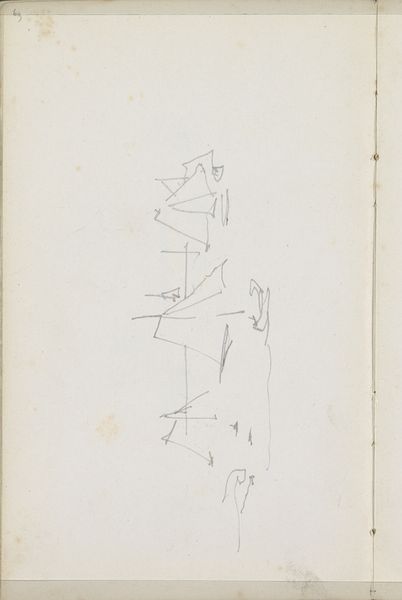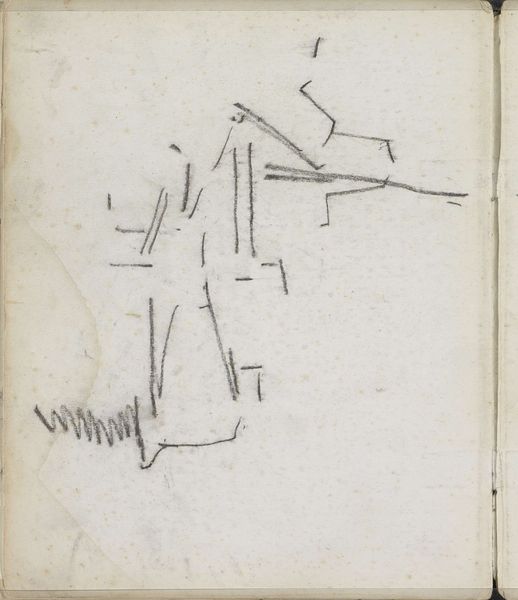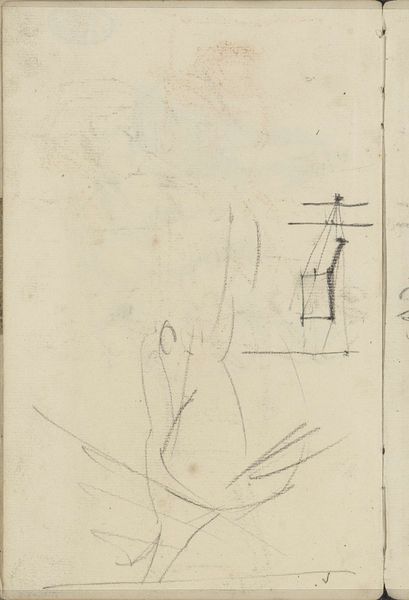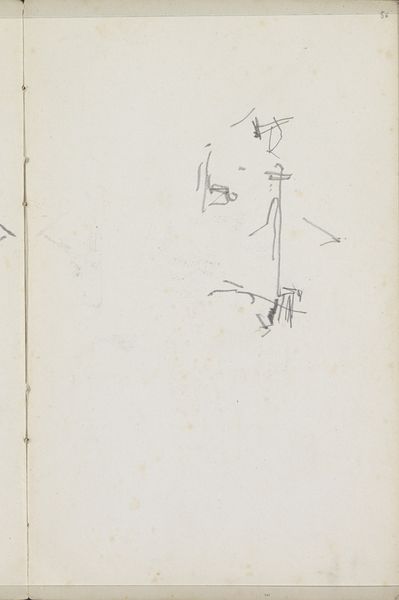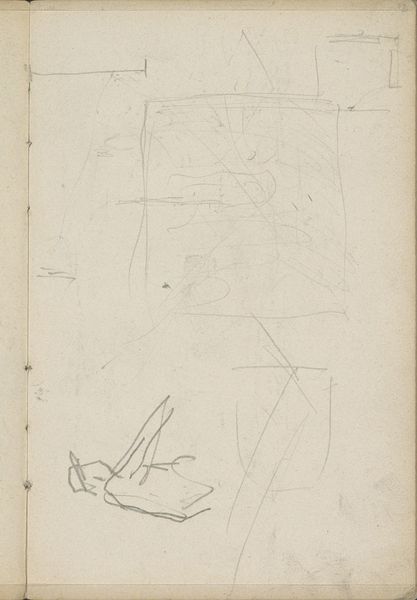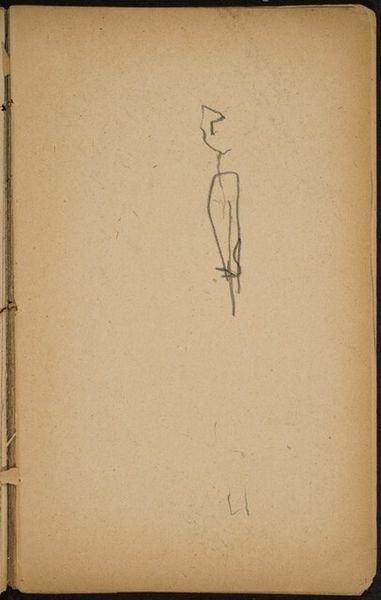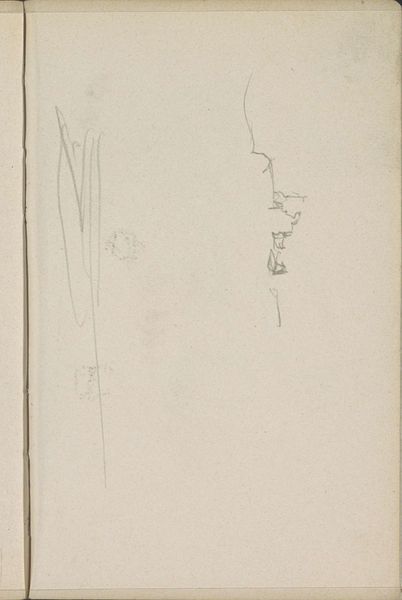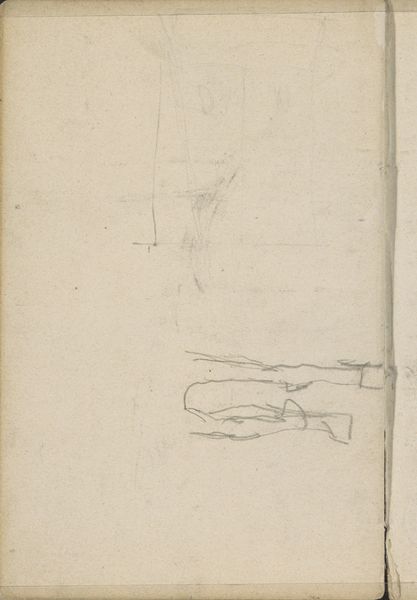
drawing, paper, ink, pencil
#
drawing
#
art-nouveau
#
figuration
#
paper
#
ink
#
pencil
#
abstraction
#
line
#
symbolism
Copyright: Rijks Museum: Open Domain
Curator: So, we're looking at a drawing by Carel Adolph Lion Cachet, a "Fantasiefiguur" or "Fantasy Figure," made around 1890. It’s in the Rijksmuseum collection. Immediately, what leaps out at you? Editor: Well, there's a striking whimsicality to the form. The linework, done in pencil and ink on paper, gives the figure this airy, almost dreamlike quality. It reminds me a bit of something you might find in the margins of a medieval manuscript. Curator: Absolutely! The looseness invites interpretation. Cachet was clearly playing with the art nouveau style and the emerging symbolism of the era. The curves, the almost abstract human form...it’s as if he’s exploring the boundary between representation and something more…intuitive. It is about tapping into a collective consciousness? Editor: I appreciate how you connect it to art nouveau and symbolism, both movements steeped in exploring the interior lives of people through expressive visual language, often looking towards nature for inspiration, but it might be interesting to consider if we see any connection with women’s liberation movements during that time. The flowing hair and stylized body suggest the ways artists may have begun visualizing modern femininity and maybe women’s political power at this time. Curator: Fascinating! It definitely adds another layer to consider – the socio-political forces brewing beneath this elegant surface. I tend to perceive an introspective search, even the emergence of surrealism. Cachet wasn't necessarily making a direct political statement, but could the symbol-laden compositions be reflecting the shifting cultural landscape, especially as we transition into the 20th century? Editor: Possibly, the line work emphasizes the character’s contours while making the artwork less detailed. We can speculate whether he saw abstraction as freeing or a sort of cage that confined his work into certain interpretations of identity at the time. Either way, Cachet prompts more questions than concrete answers! Curator: Agreed. And it’s in that space of inquiry that the artwork truly thrives. It reminds us that art is not just about what we see, but how we feel and question. Editor: Absolutely. These initial explorations encourage further dialogue about both artistic production, identity, gender, and society's role during this period!
Comments
No comments
Be the first to comment and join the conversation on the ultimate creative platform.


